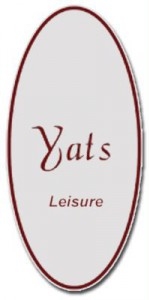Lesson 03 – What is the correct serving temperature for each type of wine?
Is drinking a glass of fine Champagne at 15˚C room temperature really insane? That depends whether you know what you’re doing and more importantly why you are doing it. We’ll get to that later. First, let’s cover some less controversial grounds about wine serving temperatures.
Everybody knows that “serving red wine at room temperature” is a grossly generalized answer to a complex question of “at what is the right temperature for wine to be drunk?”
Complex, yes but difficult to understand, it certainly is not once. All we need to do is to look into how temperature can alter the effect of wine have on our palates. The temperature-sensitive aspects of wine include alcohol, tannin, acidity and body. Here is a table showing their how temperature’s effect on wine-palate interactions:
|
TEMPERATURE EFFECT WINE APPRECIATION
|
||
|
Taste
|
********** Serving Temperature **********
|
|
|
Aspects
|
Higher
|
Lower
|
|
|
||
| Tannin | Round, supple | Bitter, harsh |
| Acidity | Volatile, tart | Milder, flat |
| Alcohol | Less pronounced | more prominent, hot |
| Body | Lighter | Full or heavy |
| Aromas | More intense but dissipates quicker | Subdued but persistent |
| Flavors | Exaggerated | Less intense |
|
|
||
Admitted it is slightly oversimplified but this table handles 90% of the situation that the average wine connoisseur will encounter most of the time. I don’t know about you but for me, memorizing anything more is a lost cause.
FINE TUNING SERVING TEMPERATURE
None of that information will help us much if we don’t know anything about the wine that we’re about to serve. That’s why a sommelier is paid what he/she is paid – usually quite a tidy sum, I’m afraid. When faced with an unfamiliar bottle at home or in a restaurant, remember to taste it first, at the benchmark temperature of 15˚C or red, 12˚C for white and 5˚C for Sparkling. Far too many restaurants make the far too common error of asking them to “taste” a wine at an inappropriate temperature. After that you can decide to adjust the drinking temperature up or down a little depending on the results of the tasting. Let me explain with a couple of examples.
For example, if a red wine imparts too much bitter astringency on your palate, you could warm it up by 2-4˚C to make it taste “sweeter”. If you find a white wine (or a very old red wine) to taste far too tart for your palate, you can chill it down a bit more to “calm” the acidity but once the fruit flavors start to disappear, you know it’s too cold. If you have tried very hard to smell a wine and nothing is coming back, you might warm it up a little increase its vapor.
If you don’t have a sommelier following you around all the time to answer your questions about the characteristics of the wines you choose, here are some standard serving temperatures for popular wine styles.
|
Wine/Style of Wine
|
Serving Temperature
|
| Champagne esp. Vintage Champagne |
5˚C
|
| New-world Sparkling, Cava, Prosecco, Sekt |
7˚C
|
| Lean Whites – Chablis, Chenin Blanc, White Bordeaux, Riesling |
9-10˚C
|
| Fino Sherry |
8˚C
|
| Medium Whites and older than 10 yrs – Puligny-Montrachet, Meursault, Cold climate Chardonnay |
10˚C
|
| Full Whites – Condrieu, Hermitage Blanc, Corton-Charlemagne, Warmer climate whites |
12˚˚C
|
| Coteaux du Layon, Monbazillac, ice wine other med-body sweet dessert wine |
7˚C
|
| Sauternes, Trockenbeernauslese and rich sweet wines |
9˚C
|
| Beaujolais Nouveau |
10˚C
|
| Rosé, Beaujolais Village, light-bodied reds |
11˚C
|
| Light-bodied and older reds; Beaujolais Cru |
12˚C
|
| Beaujolais Cru, Dolcetto |
13˚C
|
| Burgundy Village and older crus |
13˚C
|
| Young Cote de Nuits and crus |
15˚C
|
| Burgundy Grand Crus and new-world Pinot Noir |
16˚C
|
| Gran Reserva and Reserva Rioja |
14˚C
|
| Medium-bodied and 10-yrd-old reds; Barolo |
12 -14˚C
|
| Amontillado sherry |
14˚C
|
| Ordinary Tawny Port |
14˚C
|
| Full-bodied reds |
15˚C
|
| Very young reds |
17˚C
|
| Chianti, Brunello |
15˚C
|
| Young (5 years) Rioja, new-world reds |
16˚C
|
| Cognac, Armagnac, Brandy |
19˚C
|
| LBV and 10-yr-old Tawny |
16-18˚C
|
| Vintage Port |
18-20˚C
|
| Zinfandel, Amarone, Red above 15% ABV |
17-19˚C
|
Serving temperature is like make-up in a way: it can make a beautiful wine very ordinary and it can cover up a lot of flaws for not-so-perfect wines. When done properly, it simply brings the best out of a good bottle of wine without changing its personality.
Now back to drinking Champagne 10˚C warmer than recommended, it is not insanity but slightly masochistic perhaps unless you are doing this to taste the wine behind the bubbles. There is “wine” beneath all the fizz and at the near-freezing temperature that we tend to enjoy our bubblies, the qualities of the white behind that goes into making Champagne are somewhat masked. Once we warm it up to 13 or 15˚C, the “wine” starts to emerge. However, Champagne is one of the most “acidic” wines. Low serving temperature is necessary to make it enjoyable. We save a little Champagne to drink warm only to check the quality of its base wine. There’ll be more on this subject when we devote one entire lesson on Sparkling wine next week.
